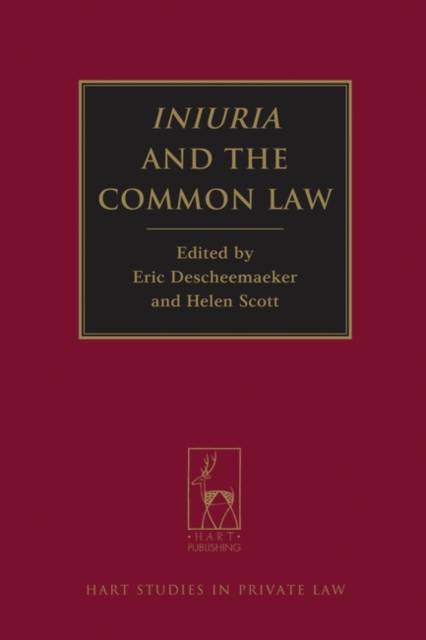
- Afhalen na 1 uur in een winkel met voorraad
- Gratis thuislevering in België vanaf € 30
- Ruim aanbod met 7 miljoen producten
- Afhalen na 1 uur in een winkel met voorraad
- Gratis thuislevering in België vanaf € 30
- Ruim aanbod met 7 miljoen producten
Zoeken
Omschrijving
The delict of iniuria is among the most sophisticated products of the Roman legal tradition. The original focus of the delict was assault, although iniuria - literally a wrong or unlawful act - indicated a very wide potential scope. Yet, it quickly grew to include sexual harassment and defamation, and by the first century CE, it had been re-oriented around the concept of contumelia so as to incorporate a range of new wrongs, including insult and invasion of privacy. In truth, it now comprised all attacks on personality. It is the Roman delict of iniuria which forms the foundation of both South African and - more controversially - Scottish laws of injuries to personality. On the other hand, iniuria is a concept formally alien to English law. But, as this book's title suggests, the collection of essays are representative of a species of legal scholarship perhaps best described as 'oxymoronic comparative law, ' employing a concept peculiar to one legal tradition in order to interrogate another where, apparently, it does not belong. Addressing a series of doctrinal puzzles within the law of assault, defamation, and breach of privacy, the book considers in what respects the Roman delict of iniuria overlaps with its modern counterparts in England, Scotland, and South Africa. It also explores the differences and similarities between the analytical frameworks employed in the ancient and modern law, as well as the degree to which the Roman proto-delict points the way to future developments in each of these three legal systems. It is a unique study that will be of interest to tort lawyers and legal historians. (Series: Hart Studies in Private Law - Vol. 9
Specificaties
Betrokkenen
- Auteur(s):
- Uitgeverij:
Inhoud
- Aantal bladzijden:
- 276
- Taal:
- Engels
- Reeks:
- Reeksnummer:
- nr. 9
Eigenschappen
- Productcode (EAN):
- 9781849465038
- Verschijningsdatum:
- 22/08/2013
- Uitvoering:
- Hardcover
- Formaat:
- Genaaid
- Afmetingen:
- 157 mm x 236 mm
- Gewicht:
- 544 g

Alleen bij Standaard Boekhandel
+ 275 punten op je klantenkaart van Standaard Boekhandel
Beoordelingen
We publiceren alleen reviews die voldoen aan de voorwaarden voor reviews. Bekijk onze voorwaarden voor reviews.








